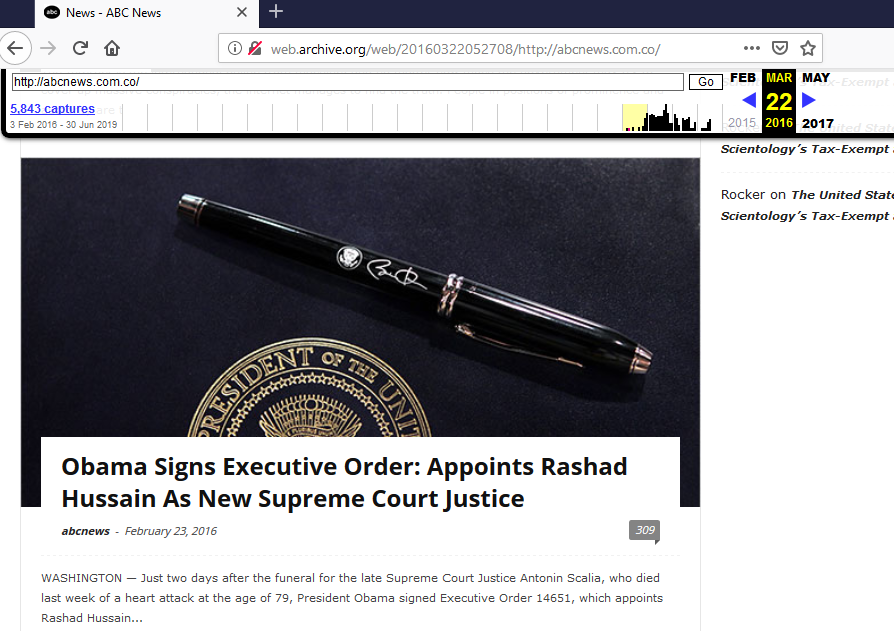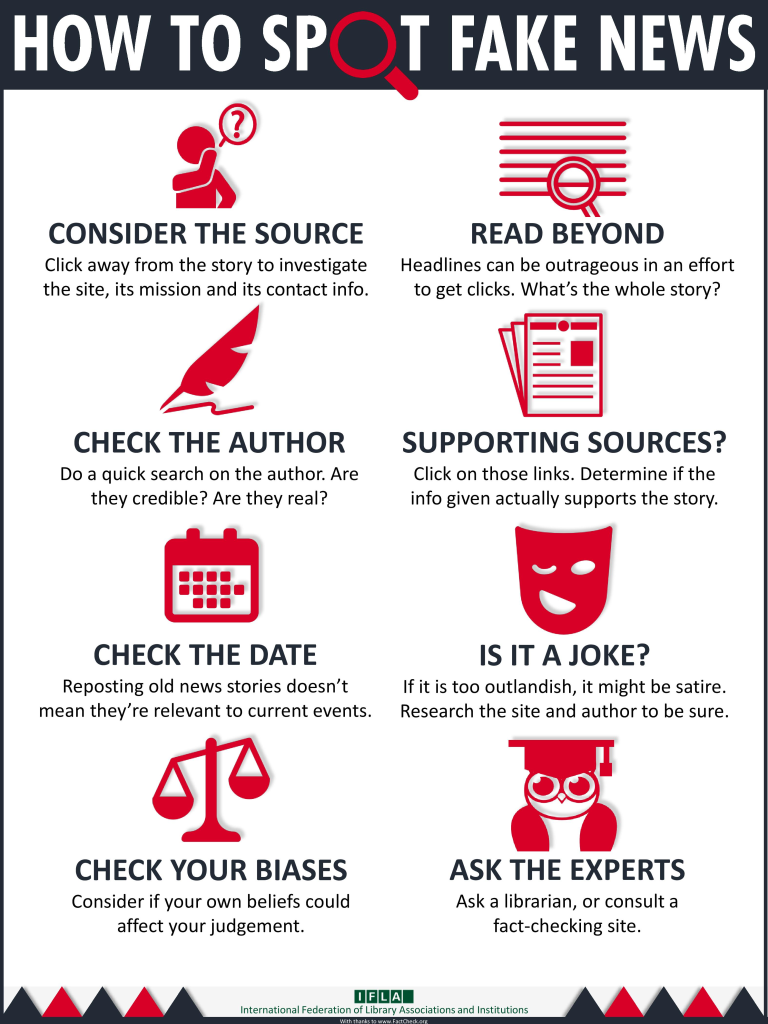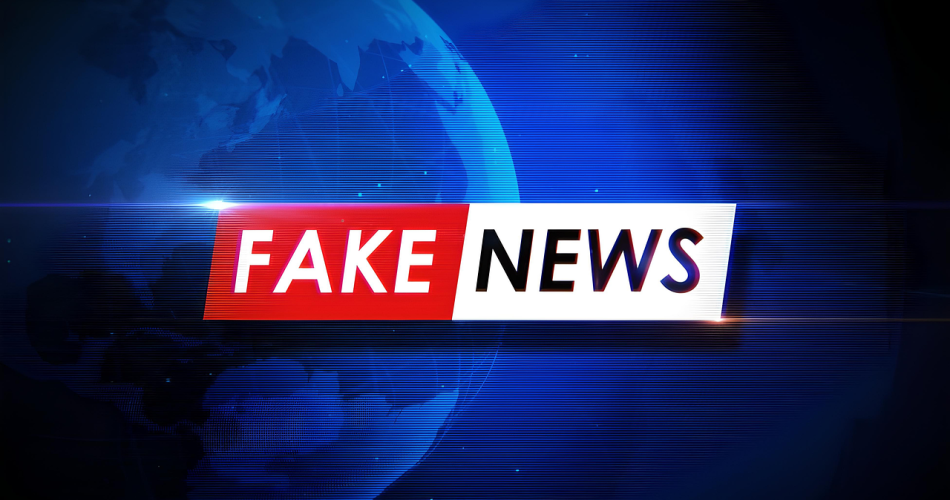Anyone who hasn’t spent the last few years in a cave should be familiar with the concept of fake news. Fake news is just that – articles and other content that are presented as accurate but are, in reality, either made up entirely or do contain an element of truth but grossly exaggerate or misrepresent other elements and facts that can be found in the article. Or even half of an article can be true and the other half entirely made up.
There are other types of crap said and published by politicians and less than honest journalists, like writing an entirely true statement or article but for example with units of measure used changed to make the numbers more impressive – instead of saying “10 kilometres have been built”, they say “10.000 meters have been built”. Or saying 52% of women do that thing, without mentioning that the total sample size is 42, which is hardly representative. Or stuff like the hilarious Twitter/X account @justsaysinmice exposes – citing studies without mentioning they were done in mice. Too bad they have stopped tweeting, or should I say X-ing?
To add to the confusion, not everyone who says ‘fake news’ is right, and not everyone who says ‘fake news’ is even honest, deliberately trying to throw shade on a correct story.
As you can see from this description alone it is clear that this is starting to become a massive problem in our modern world which increasingly features shorter and shorter attention spans and more and more dependency on online sources of information – it’s becoming such a problem that it can affect issues like electing MEPs or presidents and indirectly the very health of our world and by extension – us.
So, what is to be done? Well, if you’re an ethical person, you would want to know if something is true before sharing it. Of course, as everyone is extremely busy these days, your time is limited. So, how can you, preferably quickly, determine if you’re dealing with fake news or not? Let’s see.
Note: this post focuses mainly on fake news and misleading online content. Legacy media might be addressed in another article.
Look deeper at the source
You need to consider who is the publisher of a specific article. Sure, even the most trustworthy source can publish nonsense if they have a bad day or are not paying enough attention, but they do not necessarily set out to deceive, unlike some online sources.
So, what are the indicators that a source of the story might not even be a genuine news organisation but rather some dude in his mom’s basement with too much time on his hands?
1. Check the domain name
There may be websites out there mimicking real news websites to gain trust. One of the more famous examples of this practice was the now-deleted ABCnews.com.co – notice the ‘.co’ extension after com, which mimicked the design of a real news site, ABC News – abcnews.com

2. How about the author?
Is the author listed? If not, the site might not be trustworthy. Of course, it could be – as it is here often – that the author prefers anonymity. Still, this is not a news site. It’s an opinionated, openly liberal blog. It is not neutral and does not provide the news. If the author is listed, there should be links to his Twitter or other online profiles. There, you can take a quick scan for bias, grammatical mistakes, or other signs of being a fake news reporter.
3. Look for an ‘about’ page
While actual fake news sites are unlikely to disclose that they are fake, the lack of an about page, contact info, and a way to contact the journalists is a bad sign. Newspapers love getting hold of a story first, so a site that offers news but does not instruct readers on how to report it to them is suspicious.
Not only that, but some sites will, in fact, in their ‘about’ section disclose that they are satire and that their content is for comedy only. Please consider that possibility if the content you’re reading sounds especially outrageous. Do yourself a favour and don’t be like one of those people who were fooled by the articles in The Onion, for example.

Look deeper at the quality of the site
Shady sites often have shady quality. Look and feel means a lot. A trustworthy source would care more about those things as it means properly representing their brand as opposed to someone just looking for quick money.
This is often easier to detect on the desktop, as the advancement of modern web design techniques has ensured that almost all sites on mobile look very similar, with text occupying practically the entire viewport, making it harder to detect evidence of bad design, for example. Not only that, but many sites have implemented the Facebook Instant Articles so they are even more alike than they would be in a regular mobile browser.
So, if you care about something, you should double-check the site on the desktop when you have access to it.
1. Ads galore
The math is not complicated here. Fake news drives traffic. Traffic means views. Views mean clicks on ads. Clicks on ads mean cash. If the content of the site is surrounded by ads from all possible sides and you cannot look anywhere without seeing an ad, that might be an indication that the site does not believe in showing only ads that might be relevant to their visitors, but are playing the numbers game. And the way to get ahead in that game is to make up things that drive clicks.
2. Design
A professional website is likely to have a professional designer. If the design doesn’t appear professional, it’s most likely not designed by amateurs eager to earn money by getting clicks. Mind you, this site is not bad-looking either. As I am not a designer, I purchased the theme for it from ThemeForest for not a lot of money.
I am saying this just to remind you that there are ways around this rule, so do not rely on it too much.
3. Does the site have a valid SSL?
This might not mean anything, but reputable news organisations are unlikely to have SSL certificates, let alone have them expired or similar. Note that the presence of SSL should not indicate that the site is particularly trustworthy, as basic SSL is relatively cheap – but the lack of it is even more alarming.
4. Look for traces of bad spelling
Reputable news sources would not have this. While I am not personally familiar with the process of writing and publishing a news article, I would imagine that the article goes through several people – reporters, sub-editors, editors … [Wikipedia]. Also look for strange punctuation, such as multiple exclamation points, all caps, or similar signs.
5. Adherence to the GDPR, privacy policy …
Many fake and hoax sites would not even care if they were not fully compliant with the EU or US law. Remember that story about the city in Macedonia that was essentially a fake news factory? Here’s a reminder. Note that they only cared about the law of Macedonia, and nothing was illegal there.
Other considerations
1. How old is the article?
Some stories might be true but no longer relevant five years ago or they might have even been disproven later. Always take a moment to look for the date. After all, you might be sharing something from 2015 as news today, which would be, to put it mildly, embarrassing.
2. How did you arrive at the site?
While Google is far from innocent when linking and profiting from fake news, it is nonetheless much harder for a site to get on to the first few pages of Google search results than it is for someone to share a link on Twitter or Facebook on which you clicked. While this is not technically a way to detect whether the site is fake, you should keep it in mind.
Technical means – use NewsGuard
If you feel the above is a lot of work, well, it actually can be. Luckily, there exist browser extensions that do some of that work for us. Behind them are independent organisations that do the fact-checking thing professionally. The only drawback is that they usually operate within their databases, which means that if their fact-checkers haven’t gotten around to checking a particular website yet, there might be no results.
But, hey, you’re supposed to get your news from multiple resources anyway. Some of them might have already been checked. So, verify the story on another source.
I want to recommend the NewsGuard extension.

NewsGuard is an organisation that employs journalists and editors to rate news websites based on its criteria. You can read about the criteria or see it in action after you install their extension. To install the extension, visit their site; it should offer the appropriate extension for your browser.
That said, the Edge Browser subscription is free, courtesy of Microsoft.
Other important things to keep in mind
1. We can be very lazy and judge things too quickly.
Our nature is part of the problem. Whenever you see something online that either inflames you greatly or gives you great joy – maybe because it is powerful stuff against your opponents – pause for a second and give it a thought. Try not to be hasty, but to be critical.
2. Be EXTRA careful when it comes to medicine
Homoeopathy, healing crystals, and other nonsense, in my opinion, could be considered fake news as well – especially the reports of them being miracle cures.
Pay extra attention to all factors discussed above when deciding on a health-related issue. When it comes to anything more than a scraped knee or a headache, nothing you will ever find online can be a substitute for a visit to the doctor.
That includes mental health as well. Do not joke with your health.
Bonus
People at the International Federation of Library Associations and Institutions have created this handy infographic that includes some of the advice given here.

Please, remember to think critically. We have all seen the damage fake news can create. Let’s do everything that we can to limit their reach.
Sources
- Post-Truth: How Bullshit Conquered the World by James Ball
- IFLA – How to Spot Fake News
- FactCheck.org – How to Spot Fake News

